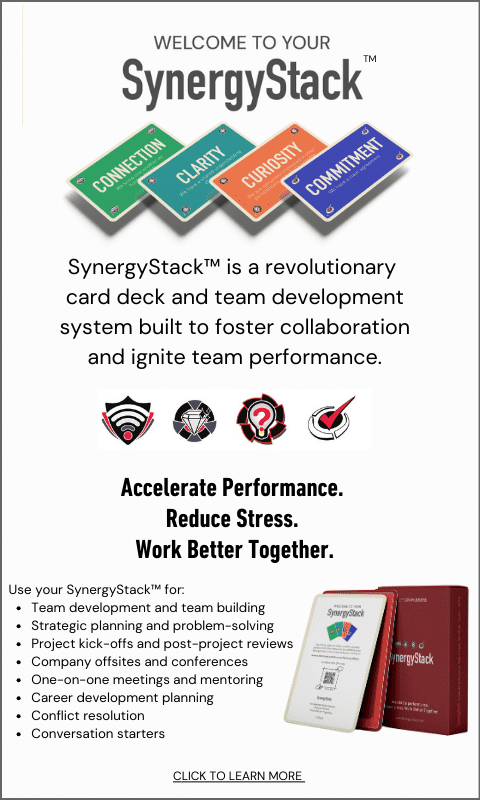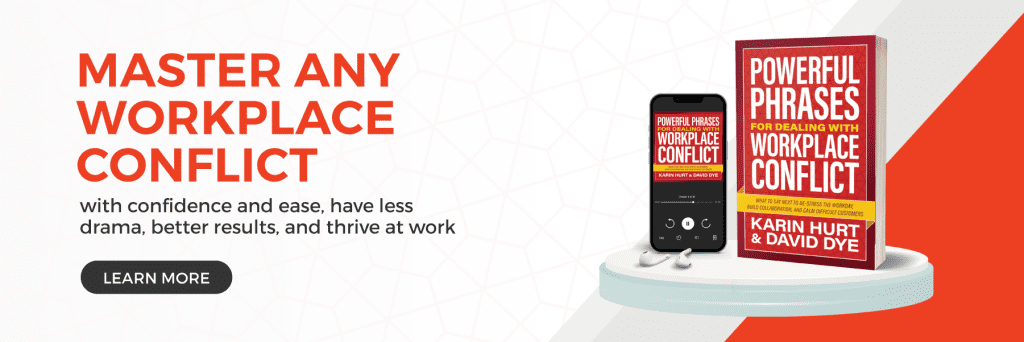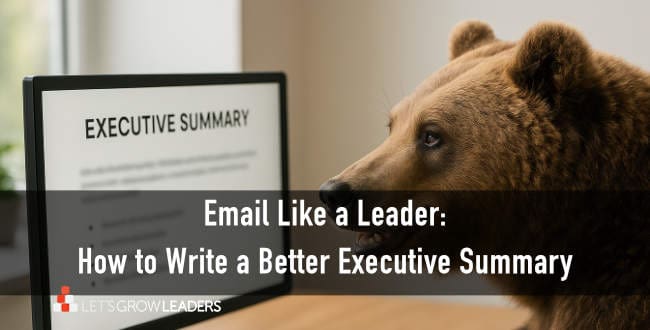A seemingly no-win scenario is a chance to earn trust, and innovate.
- Reframe
- Own the UGLY
- Collaborate
- Win with Values
- Choose a Different Time Frame
- Take Action
- Leave If You Must
A No-Win Scenario?
Recently, we had one of our global leadership development participants ask how we would lead through a no-win scenario. He faced a challenging product request that he believed would either overtax his team or disappoint the client. He concluded his question by asking: “What is your Kobayashi Maru?”
For the non-Trekkies, this is a classic Star Trek reference to a no-win scenario that everyone in Star Fleet Academy would face. You receive a distress call from a damaged ship (the Kobayashi Maru) that’s stranded in enemy space. If you choose to ignore it, they die. If you choose to attempt the rescue, you risk your ship and crew (and in the actual test, an attempted rescue is met with overwhelming enemy force).
Captain Kirk is the only one to have “beaten” the scenario in that, on his third attempt, he reprogrammed the simulation.
Business No-Win Scenarios
You might not have to rescue a damaged ship, but lead long enough and you will certainly face situations where you don’t like the alternatives. These circumstances can feel like no-win scenarios. Here are just a few examples that we’ve faced in our careers:
- Decreasing insurance benefits or eliminating positions.
- Taking a promotion with the explicit task of closing job sites and laying off people.
- Overworking staff to keep someone else’s misguided promise.
- Being told to fire someone who’s been loyal to the company and worked hard to qualify for their next role.
- Relying on a “brilliant jerk” who gets results, has protective relationships with senior leaders, but makes life hell for their team.
Those are just a few examples, and you could certainly add to the list. The critical factor is that you face outcomes that feel equally miserable, unfair, or wrong. Sometimes it’s not just feelings – they might objectively be unfair or wrong.
Leading Through a No-Win Scenario
The key to successfully leading through no-win scenarios is to understand that these moments switch us into victim mode. To lead well, you need to re-empower yourself and your team. Captain Kirk rejected the no-win scenario and reprogrammed the scenario. Here are seven ways you can also find a win for yourself, your team, and your customers.
Reframe the Problem
Reframing is a powerful mental technique that allows you to see a situation differently. People naturally tend to follow into either-or thinking – and it’s often “either this horrible outcome or that miserable one.” Reframing helps expand your thinking to avoid getting stuck.
One of the easiest ways to visualize reframing is to look a picture in one frame (say a pure white frame) and then place it in a different frame—perhaps a deep blue. Your perception of the picture changes. The blue frame brings out the blues in the picture and may give it a calmer feel. The white frame might give more contrast and an energetic feel.
To reframe a problem, you choose to look at it differently. There are several ways you can do this. In my (Karin’s) recent interview of reframing expert Thomas Wedell-Wedellsborg, he shares several options including:
- Is there a better problem to solve than the one you first perceive?
- Are you looking at the real problem or is there a root cause?
- What does success really look like? Clarify the outcomes that would feel good – they’re not always the outcomes we first assume.
- Is there an alternative path to achieve success?
Often, just the act of looking at a challenging situation through a different frame will re-energize you and reveal solutions.
Own the U.G.L.Y.
Another technique to help reexamine no-win scenarios for alternative paths is our Own the U.G.L.Y. technique. UGLY is an acronym representing four questions that you can answer yourself—but it’s even more powerful to discuss with your team:
- U – What are we Underestimating? What resources have we not considered? What headwinds are we not taken into account? What’s changed in our environment?
- G – What’s Gotta Go? What are we doing that no longer makes sense? What’s more habit than value? What’s wasting time? Can we remove a needless outcome, process, or criteria that will help us be remarkable?
- L – Where are we Losing? Are we genuinely underperforming? If so, where? If not, what’s causing the perception? Are we losing ground somewhere? If so, how?
- Y – Where are we missing the Yes? What are the opportunities hiding in plain sight? Are there different paths to success haven’t we tried or considered? What new opportunities exist that we didn’t have before?
A team discussion of these four questions can quickly help you and your team find a new way forward.
Collaborate
Problems for one group are frequently opportunities for someone else. Collaborating is one of the most overlooked ways to lead through no-win scenarios. Is there someone with a complementary problem to yours? Do you have a solution they can use? For example, if you have a short-term loss in demand, rather than lay people off, is there a short-term labor need elsewhere in your organization—or even with another business?
complementary problem to yours? Do you have a solution they can use? For example, if you have a short-term loss in demand, rather than lay people off, is there a short-term labor need elsewhere in your organization—or even with another business?
Win with Values
There are times where the choice you face are truly unjust and there is no easy answer. In these situations, what are your values? What matters most and how can you live out those values? Sometimes, that’s the win in a no-win scenario.
One of my (David’s) favorite examples of choosing a values-win, is from the movie Glory.
Set during the US Civil War, Colonel Shaw, played by Matthew Broderick, is asked to lead one of the first regiments of African American soldiers. He leads his men with dignity and genuinely cares for his troops. However, at one point in the story, he receives orders to have his men set fire to a town. He refuses the order as unlawful.
Shaw’s commanding officer, who mistreats, disrespects, and even shoots his own men, tells Shaw that he can either follow the order or protest it through normal channels. In the meantime, Shaw would be relieved of duty and his men would be transferred to the dishonorable leader where they would certainly face mistreatment and needless cruelty.
Now that’s a no-win scenario.
Shaw finally chooses to care for his men and orders them to burn the town.
This is an example of finding a win with your values. When you face a decision where there are truly limited outcomes and they all stink, what are your most important values? For Shaw, it was the dignity and care of his men. It was a hard choice and did real damage to the town and the people who lost their homes. But it was the choice he could live with.
Choose a Different Time Frame
One way to find the win in a no-win scenario is to focus on the bigger picture. In the short-term, the options available may be distasteful, but is there a path that helps you and your team achieve your longer-term goals?
Sometimes this plays out in interpersonal relationships where the long-term relationship matters more than fighting for a win in the short-term at the expense of the other person’s dignity. In other scenarios, looking at the bigger picture can give you a foundation to renegotiate terms by emphasizing what matters most to your supervisor, your customer, or your partners.
Take Action
Once you’ve reflected, reframed, or centered yourself in your values, it’s time to act. Your information will never be perfect. The scenarios will never play out perfectly. But informed action builds momentum.
Committing to action also energizes and empowers you and your team. You’re not sitting there as a hapless victim of circumstance.
“When choosing between two evils, I always like to try the one I’ve never tried before.” -Mae West
Leave If You Must
Finally, there are times when the no-win scenarios you face are immoral, illegal, or unethical to such an extent that you are better off finding another place to work.
Your Turn
No-win scenarios can demotivate you and sap morale, if you let them. Or, you can get creative, tap into your values, and empower your team for a strategic future.
We would love to hear from you: how have you or another leader you respect navigated seeming no-win scenarios?
Are you ready to accelerate team performance?
Increase communication, connection and trust while driving results. See our Team Accelerator Program page and sign up for the free demo to learn how.








I enjoyed reading your blog, especially the statement, ” win with values”. When discussing “no-win” situations, sometimes the circumstances can be challenging, but I always make decisions based on my moral obligation to the organization and the people I work with. “Win with values”, is literally how I navigate decisions I make in my life, thank you for this post.
A’keia, I’m glad it was helpful. That is a choice that we have in every situation, isn’t it?
I agree with the previous post. Be true to your values. I’m facing a no win situation n my street, not at work, and keeping my calm, being rational in the face of adult toddler behaviour is all I have, to counter the situation.
Hi Elizabeth, I’m so sorry to hear you’re dealing with that situation. These 12 G.O.A.T. Powerful Phrases might also be helpful (they are designed for work, but readers are telling us so many examples of how they are working in their personal lives too. https://letsgrowleaders.com/2022/10/17/navigate-challenging-workplace-conflict/